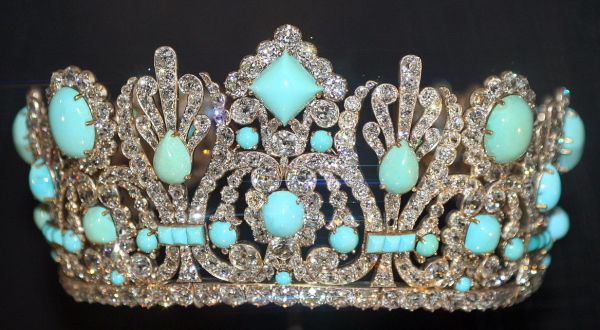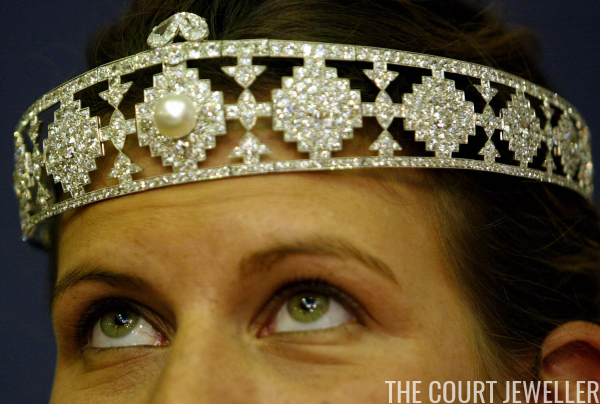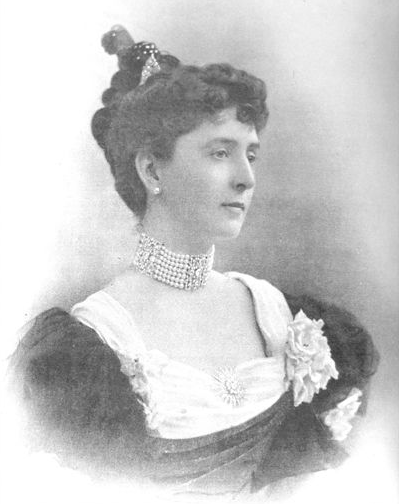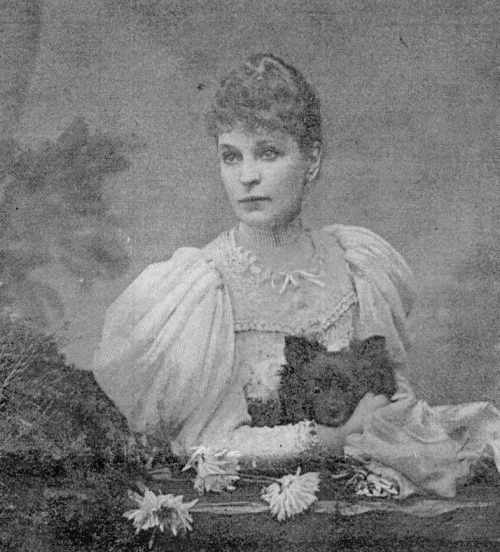 |
| Wikimedia Commons |
The Daily Diadem: Doris Duke’s Cartier Bandeau
 |
| ALESSANDRO ABBONIZIO/AFP/Getty Images |
Jewel History: Clara Huntington’s Clever Coup (1910)
 |
| Clara Prentice Huntington, the American-born heiress who became Princess Clara von Hatzfeldt |
The American colony in London is very much elated over Princess Hatzfeldt’s [1] clever capture last week of the famous aquamarine necklace belonging to Miss Hartmann [2]. The necklace cuts a brilliant figure in the social history of Pall Mall.
It was one of the most attractive of the many superb jewels which King Edward [3] presented to Mrs. Hartmann in the halcyon days when he was Prince of Wales. In the summer solstice of her beauty and influence, Mrs. Hartmann became one of the wealthiest women in England. There was no question of her social supremacy, for the Prince took occasion to make her home the headquarters of the royal maneuvers of society.
 |
| Emma Hartmann, the society maven who was close to King Edward VII |
For forty years, Mrs. Hartmann ruled amid imperial splendor. As the time drew near for the Prince to assume the scepter, he gave less and less time to these social demands. Mrs. Hartmann the while continued to maintain her semi-royal entourage, and in course of time, the strain extended her financial resources.
A shrewd banker was appointed by the King to straighten them out for her. Under his recommendation, Mrs. Hartmann moved to a less expensive residence, White Lodge, in Richmond Park [4], which the King provided for her. But even there the luxury of the life she demanded proved too much, and recently, to liquidate the many bills, her financial advisers decided to sell some of her costliest jewels. Among the most magnificent was the rare and perfectly colored aquamarines.
For years the wives of several American multi-millionaires sojourning in England have envied Mrs. Hartmann the possession of this beautiful necklace. The cost was nothing to them, and each determined to seize the opportunity to acquire it. Unwittingly they adopted the routine course of negotiating the purchase. Meanwhile, Princess Hatzfeldt dispatched a shrewd and diplomatic agent to make terms with Mrs. Hartmann’s bankers. The next day the princess had the satisfaction of presenting the gift to her mother, Mrs. Collis P. Huntington [5], who had expressed a desire for the rare aquamarines.
NOTES
1. Princess Clara von Hatzfeldt (1860-1928), born Clara Elizabeth Prentice, was the daughter of Edwin Prentice, a Sacramento grocer, and his wife, Clara Stoddard Prentice. After her father’s death, she was adopted by her childless aunt and uncle — who happened to be the wealthy railroad baron Collis Potter Huntington, one of the men responsible for building the first transatlantic railroad in America. The Illustrated American reported that Clara “longed to wear a coronet,” so her adopted father arranged a marriage with a debt-ridden German nobleman, Prince Franz von Hatzfeldt, cousin of the German ambassador to Britain. The couple married in London in 1889. Clara’s husband died in England in 1910.
2. Emma Hartmann, born Eliza Emma Steiner, was a longtime friend and probable mistress of King Edward VII of the United Kingdom. Her husband was the German-born James Hartmann. The family possessed a fortune made from the manufacturing of fabrics and dyes, and Emma and James had a grand home together in Grosvenor Square in London. After James’s death, Emma moved to 39 Berkeley Square, where she was one of the leading figures of British society, holding famous parties and dinners.
One interesting additional note: Emma had one son, James Frederick Hartmann, who married Constance Lister (a granddaughter of the novelist Thomas Henry Lister). One Australian newspaper wrote in 1901 that James Frederick “bears a striking personal resemblance to the King; in fact, he has [on] more than one occasion been mistaken for His Majesty.” Mm-hm.
3. King Edward VII of the United Kingdom (1841-1910), son of Prince Albert and Queen Victoria, husband of Queen Alexandra. He reigned from 1901-1910, dying a few months after this article was published.
4. White Lodge is a home in Richmond Park, part of the London borough of Richmond upon Thames. Today it houses the Royal Ballet Lower School, but in the past, it was a royal residence. Its occupants included Princess Mary, Duchess of Gloucester (the last surviving child of King George III); King Edward VII (before the death of his father, Prince Albert); the Duke and Duchess of Teck; King George V and Queen Mary; King Edward VIII (who was born and baptized in the house). Prince Alexander of Yugoslavia, son of Prince Paul and Princess Olga, was also born in the house.
Only months after Queen Victoria’s death, Edward VII offered White Lodge to Emma Hartmann as a “summer residence.” In 1909, she declared bankruptcy.
5. Princess Clara’s adopted mother (and biological aunt), Elizabeth Stoddard Huntington, died in 1883. The article may be referring to Clara’s stepmother, Arabella Yarrington Huntington. Arabella was Collis P. Huntington’s second wife, and she was a voracious collector of art, jewelry, and antiques. This article was written in 1910, just before a series of scandalous events that affected Clara’s relationship with Arabella. In 1910, Clara’s biological sister, Mary Alice, was divorced by her husband, Henry E. Huntington (who was — bear with me here — a nephew of Clara’s adopted father, Collis P. Huntington). In 1913, Henry remarried — to his uncle’s widow, Arabella Huntington. (How has no one made a dramatic historical miniseries about this family yet???)
- « Previous Page
- 1
- …
- 50
- 51
- 52
- 53
- 54
- …
- 70
- Next Page »